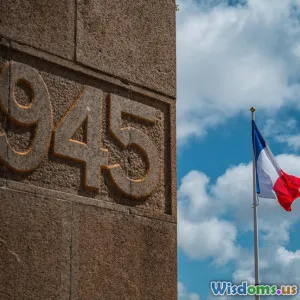
Lost Cities of the Ancients
9 min read Explore the fascinating lost cities of ancient civilizations and the archaeological secrets they reveal. (0 Reviews)
Lost Cities of the Ancients: Unveiling Forgotten Civilizations
Introduction
Lost cities evoke a sense of wonder, mystery, and discovery that captivates historians, archaeologists, and the curious alike. These ancient urban centers, often shrouded in myth and buried by time, offer priceless insights into long-forgotten civilizations. From sprawling metropolises swallowed by jungles to stone cities frozen by volcanic ash, lost cities reveal the ingenuity, culture, and eventual decline of human societies. This article embarks on an in-depth exploration of several renowned lost cities, uncovering how their rediscovery has reshaped our understanding of ancient history.
The Significance of Lost Cities
Lost cities are more than just ruins; they serve as critical windows into the past:
- Cultural Insight: They provide material evidence of social structure, religious practice, and daily life.
- Technological Marvels: Such cities often showcase advanced engineering and architectural feats, debunking assumptions about ancient technological capabilities.
- Historical Corrections: Rediscovering these cities has sometimes overturned historical narratives or introduced previously unknown peoples or timelines.
Take for instance the discovery of Troy by Heinrich Schliemann in the 1870s. Long deemed a myth from Homer’s epic, finding Troy confirmed parts of the Trojan War legend were rooted in a real city's history.
Notable Lost Cities of Ancient Times
Machu Picchu: The Inca's Hidden Citadel
Perched high in the Andes Mountains of Peru, Machu Picchu is one of the most iconic lost cities discovered in modern times. Believed to have been constructed in the mid-15th century under the reign of Pachacuti, this sanctuary city remained concealed from the outside world until its discovery by Hiram Bingham in 1911.
Why it fascinates archaeologists and travelers alike:
- The city’s intricate terracing architecture adapted uniquely to its mountainous terrain.
- Machu Picchu represents the Inca’s extraordinary mastery over stone masonry and agriculture.
- Its precise astronomical alignments reveal profound knowledge of celestial cycles.
Pompeii: A Roman City Frozen in Time
Perhaps the best-preserved snapshot of ancient Roman urban life, Pompeii met a tragic end in 79 AD when Mount Vesuvius erupted suddenly. The city was buried under meters of volcanic ash, preserving homes, frescoes, and even daily utensils.
Excavations beginning in the 18th century have revealed:
- Urban planning including forums, baths, and theaters.
- Social stratification reflected in varying house sizes and decorations.
- Evidence of dietary habits through preserved food remnants.
Pompeii’s preservation has dramatically enhanced our understanding of Roman life and society.
Angkor Wat: The Khmer Empire’s Architectural Marvel
Located in present-day Cambodia, Angkor Wat was constructed in the early 12th century and functioned as both a temple and administrative city for the Khmer Empire. Over time, the jungle reclaimed the city until it emerged again in the 19th century.
Key highlights include:
- The temple complex is the largest religious monument in the world.
- Extensive bas-reliefs illustrate Hindu mythology and Khmer history.
- Hydraulic engineering systems fed the city’s reservoirs and irrigation.
Archaeologists use satellite and LIDAR surveys to uncover more lost urban features buried beneath the dense forests.
Petra: The Rose-Red City of the Nabataeans
Situated in modern Jordan, Petra was the capital of the Nabataean Kingdom and a vital trade hub by the 1st century BC. Known for its rock-cut architecture, including the famous Al-Khazneh (Treasury), its significance was obscured after the region declined.
Important facts:
- Petra’s elaborate water conduit system supported its arid environment.
- The blend of Hellenistic architecture with local styles highlights cross-cultural influences.
- Rediscovered in 1812 by Johann Ludwig Burckhardt, it has since become a UNESCO World Heritage Site.
Archaeological Techniques Unlocking Ancient Cities
Advances in technology continuously fuel discoveries and understanding of lost cities:
- Remote Sensing and Aerial Surveys: Technologies like LIDAR allow archaeologists to see outlines of cities beneath dense forests, as demonstrated with Angkor.
- Ground-Penetrating Radar: This non-invasive method scans beneath surfaces without excavation, revealing foundations and buried structures.
- Radiocarbon Dating and Stratigraphy: Dating artifacts and layers of soil precisely coincide timelines.
- Digital Reconstruction: 3D modeling reconstructs urban layouts and visualizes cities as they might have appeared.
Examples such as the recent uncovering of an ancient Bronze Age city under the waters of the Sea of Galilee testify to how multidisciplinary approaches are critical in exploring submerged or lost urban centers.
What Lost Cities Teach Us About Civilizational Rise and Fall
Lost cities not only illuminate past achievements but also serve as cautionary tales about factors leading to a civilization's downfall:
- Environmental Change: The collapse of the Maya civilization is linked by many experts to prolonged drought and deforestation.
- Natural Disasters: Pompeii exemplifies abrupt destruction from volcanic activity.
- Economic and Social Factors: Shifts in trade routes or political instability have left cities abandoned.
As historian Paul K. Davis notes, “The fate of these cities reflects the fragility and resilience of human endeavor.” Learning from these factors aids modern societies in addressing sustainability and urban challenges.
Conclusion
The lost cities of the ancients captivate the imagination while offering invaluable lessons about human history, culture, innovation, and vulnerability. Discoveries like Machu Picchu, Pompeii, Angkor Wat, and Petra illuminate the sophistication of past civilizations and challenge our understanding of their complexity. Archaeological advances continue to unveil hidden realms beneath forests, deserts, and seas, bridging millennia to connect us with forgotten heritage. Exploring lost cities enriches our appreciation of human achievement and prompts reflection on preserving our own urban legacies for future generations.
By studying these remarkable sites, we gain not only historical knowledge but also inspiration—reminders that even in the face of collapse, human creativity and spirit endure.
References:
- Hirst, K. Kris. "Heinrich Schliemann and the City of Troy." ThoughtCo, 2023.
- UNESCO World Heritage Centre. "Angkor." UNESCO.
- National Geographic. "The Lost City of Machu Picchu." 2021.
- Beard, Mary. "Pompeii: The Life of a Roman Town." Profile Books, 2008.
- Smith, Paul J. "Petra: The Rose City of the Desert." Archaeology Journal, 2015.
Author’s note: This article draws on interdisciplinary sources to provide a comprehensive look at lost ancient cities, inspiring both curiosity and a deeper understanding of our shared human past.
Rate the Post
User Reviews
Popular Posts





















